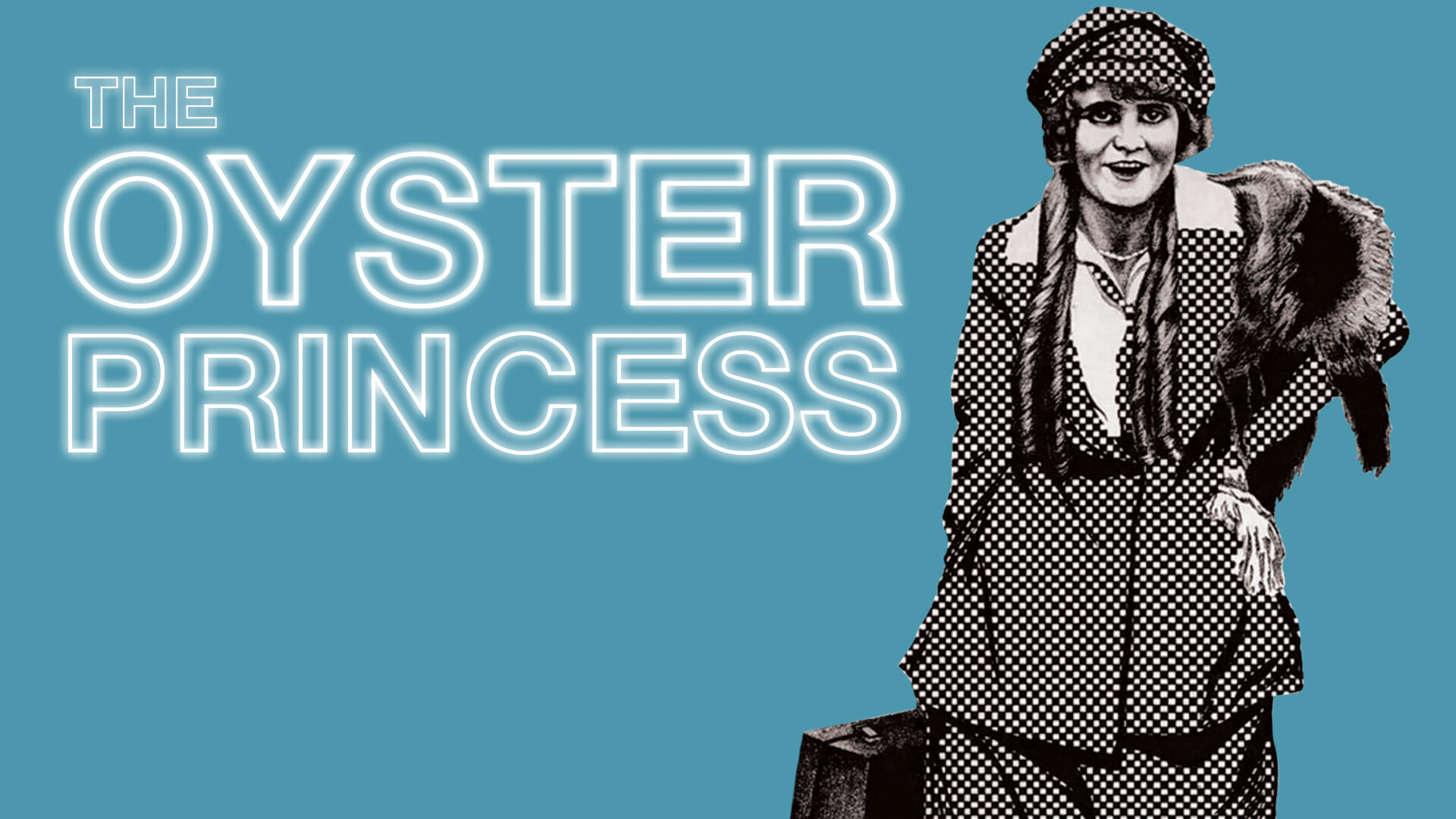
The Oyster Princess is a captivating movie that has left an indelible mark on the world of cinema. Directed by the renowned German filmmaker Ernst Lubitsch, this silent film was released in 1919 and continues to enchant audiences with its unique story and stellar performances. Set in the opulent world of the early 20th century, The Oyster Princess follows the tumultuous life of Ossi, a wealthy and pampered young woman who seeks a husband worthy of her prestigious title. Packed with humor, satire, and social commentary, this film is a delightful exploration of power, love, and the pursuit of happiness. In this article, we will delve into 42 fascinating facts about The Oyster Princess that will deepen your understanding and appreciation for this cinematic gem.
Key Takeaways:
- “The Oyster Princess” is a 1919 silent film that combines romance, comedy, and social commentary, showcasing the opulence and satire of the upper class in a must-watch cinematic experience.
- Director Ernst Lubitsch’s innovative approach to storytelling and visual humor in “The Oyster Princess” influenced future filmmakers and left a lasting impact on the world of cinema.
The Oyster Princess is a silent film released in 1919.
This iconic film, directed by Ernst Lubitsch, is considered one of the most important examples of German Expressionist cinema.
The movie is also known as “Die Austernprinzessin” in German.
Its original title translates to “The Oyster Princess” in English, which reflects the central theme of the story.
The Oyster Princess is a romantic comedy.
Despite the title, the film revolves around a wealthy American woman’s quest to find a suitable husband rather than being solely focused on oysters.
It stars Ossi Oswalda in the leading role.
Ossi Oswalda, a popular actress of the time, plays the role of the oyster princess, Ossi Quaker.
The film was a commercial success.
The Oyster Princess garnered positive reviews and was well-received by audiences, contributing to its box office success.
The Oyster Princess is known for its lavish sets and costumes.
The film’s production design showcases the opulence and decadence of the upper class, with elaborate sets and exquisite costumes.
The Oyster Princess was one of the last films Lubitsch made in Germany before moving to Hollywood.
Ernst Lubitsch would later become a prominent director in Hollywood, known for his sophisticated comedies.
The movie explores themes of social class and wealth.
Through satire and humor, The Oyster Princess critiques the obsession with material possessions and the divide between the rich and the working class.
The Oyster Princess features a blend of slapstick comedy and visual gags.
The film incorporates physical comedy and clever visual humor, adding to its entertainment value.
The Oyster Princess is considered a precursor to Lubitsch’s later “Lubitsch Touch.”
The film showcases Lubitsch’s unique style, foreshadowing the sophisticated and witty comedies he would become known for in Hollywood.
The movie was restored and re-released in the 21st century.
Thanks to restoration efforts, The Oyster Princess is available for modern audiences to appreciate its historical and artistic significance.
The Oyster Princess is an influential film in German cinema.
It played a significant role in shaping the development of German Expressionist cinema and the global perception of German filmmaking.
The film’s screenplay was written by Hanns Kräly.
Hanns Kräly, a talented screenwriter, collaborated frequently with Ernst Lubitsch in creating memorable films.
The Oyster Princess is an early example of a romantic comedy.
With its lighthearted and humorous approach to love and marriage, the film contributed to the evolution of the romantic comedy genre.
The Oyster Princess showcases the extravagance of the 1920s.
The film captures the spirit of the era, with its lavish parties, luxurious lifestyles, and an overall sense of excess.
The Oyster Princess was made during the Weimar Republic era.
The film reflects the social and cultural climate of Germany during the time of the Weimar Republic, with its mix of satire and social commentary.
The Oyster Princess is considered a classic of silent cinema.
Its comedic elements, unique storytelling, and visual appeal have solidified its place in film history.
The film was not well-received by some critics upon its initial release.
While The Oyster Princess eventually gained recognition and acclaim, it initially faced mixed reviews from certain critics.
The Oyster Princess showcases the talent and charm of Ossi Oswalda.
Ossi Oswalda’s portrayal of the eccentric and vivacious oyster princess contributed greatly to the film’s overall appeal.
The film’s soundtrack was originally performed live during screenings.
In the early days of silent cinema, musical accompaniment was provided by live musicians to enhance the viewing experience.
The Oyster Princess explores themes of feminism.
Through the character of Ossi Quaker, the film challenges traditional gender roles and societal expectations placed on women.
The Oyster Princess serves as a critique of the upper class and their extravagant lifestyles.
The film satirizes the excesses of the wealthy elite and their obsession with status and material possessions.
The Oyster Princess was one of the first films to feature synchronized sound sequences.
While primarily a silent film, it incorporated brief moments of synchronized sound, showcasing early experimentation with sound in cinema.
The film’s costumes were designed by Ali Hubert.
Ali Hubert, a renowned costume designer of the time, created stunning outfits that added to the visual splendor of The Oyster Princess.
The Oyster Princess influenced future filmmakers and comedians.
Its unique blend of comedy, social commentary, and visual storytelling has left a lasting impact on the world of cinema.
The Oyster Princess was shot in black and white.
The use of black and white cinematography adds to the film’s aesthetic and helps evoke the atmosphere of the time.
The Oyster Princess was a financial success for director Ernst Lubitsch.
The film’s popularity and box office earnings solidified Lubitsch’s position as a prominent filmmaker.
The Oyster Princess features comedic performances by Victor Janson and Julius Falkenstein.
These talented actors brought humor and wit to their respective roles, contributing to the overall comedic tone of the film.
The Oyster Princess was influenced by Lubitsch’s experience in Hollywood.
After spending time in Hollywood, Lubitsch brought back new filmmaking techniques and a fresh approach to storytelling.
The film was released during a time of artistic and cultural innovation in Germany.
German cinema was flourishing, and The Oyster Princess was a significant contribution to this artistic movement.
The Oyster Princess showcases Lubitsch’s mastery of visual storytelling.
The film’s visual composition and attention to detail demonstrate Lubitsch’s skill in creating captivating cinematic experiences.
The Oyster Princess blends humor with social commentary.
Underneath the comedic facade, the film subtly addresses societal issues and class dynamics.
The Oyster Princess was praised for its innovative camera work.
Lubitsch and his team employed creative camera angles and movements to enhance the storytelling and visual impact of the film.
The Oyster Princess is the first Lubitsch film to feature Ossi Oswalda in the lead role.
Ossi Oswalda’s collaboration with Lubitsch would continue in several other successful films.
The Oyster Princess is considered a satire on the obsession with wealth and social status.
The film cleverly mocks the materialistic nature of society and the desire for ostentatious displays of affluence.
The Oyster Princess influenced subsequent romantic comedies.
Its innovative approach to the genre inspired future filmmakers in their exploration of love, relationships, and social dynamics.
The Oyster Princess was not well-received in America upon its release.
The film faced challenges with censorship and cultural differences, leading to a lukewarm reception in the American market.
The Oyster Princess was a collaborative effort between director Ernst Lubitsch and screenwriter Hanns Kräly.
The successful partnership between Lubitsch and Kräly resulted in several critically acclaimed films.
The Oyster Princess has been referenced in various films and cultural works.
Its impact is still felt today, with homages and nods to the film in contemporary pop culture.
The Oyster Princess showcases the comedic talent of its cast.
The actors’ impeccable timing and physical comedy skills contribute to the film’s comedic brilliance.
The Oyster Princess helped establish Lubitsch as a leading director of his time.
The film’s success further elevated Lubitsch’s status in the film industry, allowing him to have creative control over his future projects.
The Oyster Princess is a must-watch for film enthusiasts and lovers of silent cinema.
Its unique blend of comedy and social commentary offers an entertaining and thought-provoking cinematic experience.
Conclusion
In conclusion, The Oyster Princess is a captivating movie that showcases director Ernst Lubitsch’s satirical brilliance and the talented performances of the cast. With its stellar cinematography, witty dialogue, and intriguing storyline, it has earned its place as a classic in the world of silent cinema. The movie not only entertains but also offers a commentary on societal norms and the pursuit of wealth and social status. Whether you are a fan of silent films or just looking to explore a unique cinematic experience, The Oyster Princess is definitely worth a watch. So grab some popcorn and get ready to be transported to a world of opulence, humor, and unforgettable characters.
FAQs
1. When was The Oyster Princess released?
The Oyster Princess was released on May 3, 1919, in Germany.
2. Who directed The Oyster Princess?
The movie was directed by the talented German filmmaker Ernst Lubitsch.
3. What genre does The Oyster Princess belong to?
The Oyster Princess is a silent comedy film, known for its satirical take on social hierarchy and materialistic values.
4. Who are the main actors in The Oyster Princess?
The movie stars Ossi Oswalda as the titular Oyster Princess and Victor Janson as her wealthy father. Other notable actors include Harry Liedtke, Julius Falkenstein, and Otto Kronburger.
5. Is The Oyster Princess available to watch today?
Yes, The Oyster Princess is still available for viewing. It has been restored and can be enjoyed by both silent film enthusiasts and casual moviegoers alike.
6. Is The Oyster Princess a well-regarded film?
Absolutely! The Oyster Princess is often praised for its clever storytelling, impressive visuals, and impeccable comedic timing. It has cemented its place as one of Ernst Lubitsch’s most notable works.
7. What is the significance of the title?
The title “The Oyster Princess” refers to the main character, who is an overly demanding and wealthy young woman. It symbolizes her obsession with luxury and her pursuit to become a princess by marrying a titled aristocrat.
8. Does The Oyster Princess have any notable awards or nominations?
While The Oyster Princess did not receive any major awards or nominations, it is still highly regarded by film critics and historians for its contribution to the silent film era.
Was this page helpful?
Our commitment to delivering trustworthy and engaging content is at the heart of what we do. Each fact on our site is contributed by real users like you, bringing a wealth of diverse insights and information. To ensure the highest standards of accuracy and reliability, our dedicated editors meticulously review each submission. This process guarantees that the facts we share are not only fascinating but also credible. Trust in our commitment to quality and authenticity as you explore and learn with us.


